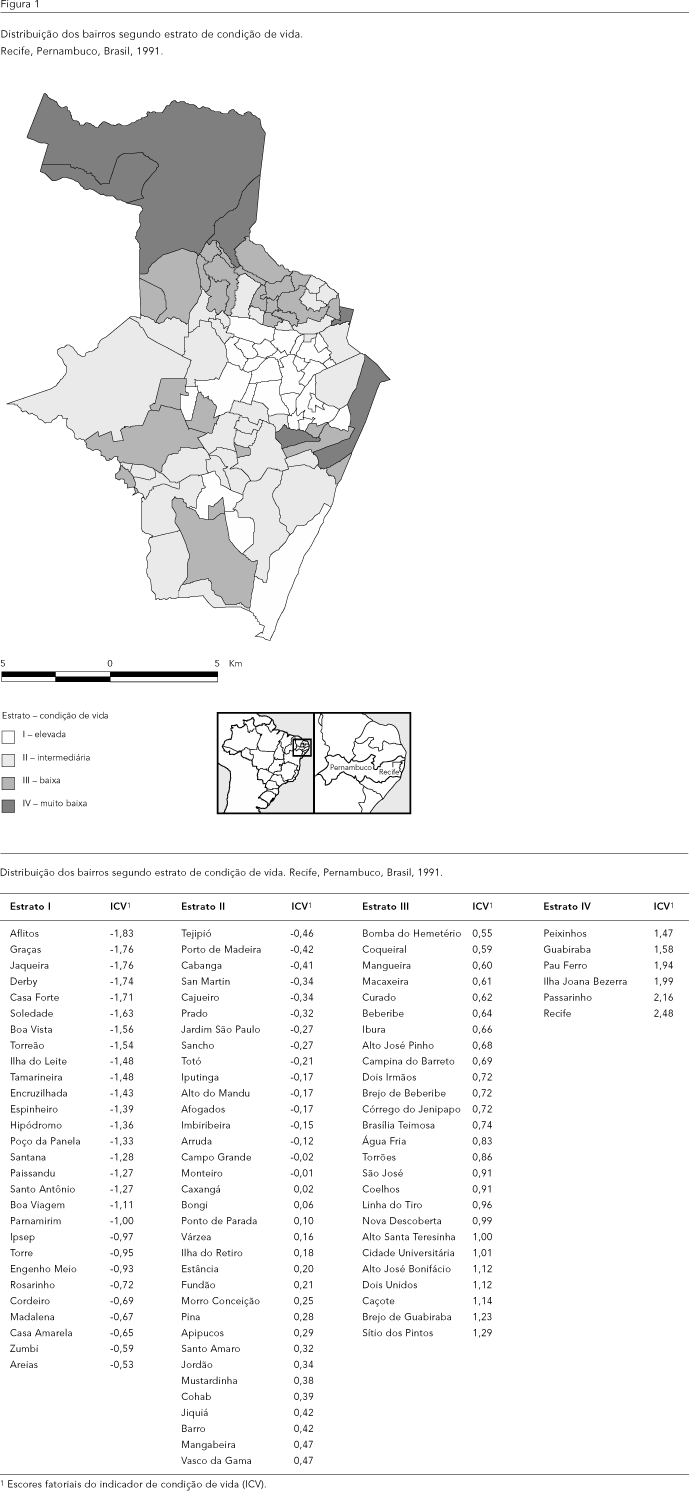The objective of this study was to show infant mortality differentials in different areas of Recife, analyzing the relationship between living conditions and mortality risk. An ecological study design compared infant mortality coefficients in 1995 with living conditions indicators obtained from the 1991 National Demographic Census. Information on the 770 infant deaths and 27,965 live births were collected from death and birth certificates. Information on water supply, sanitation, garbage collection, literacy, schooling, income, and overcrowding were used to establish a compound indicator for living conditions, constructed through factor analysis. The neighborhoods were then ordered according to the level of living conditions and grouped in 4 clusters, through hierarchical cluster analysis. Infant, neonatal, and post-neonatal mortality coefficients were 23.94, 17.66, and 6.28, respectively, for cluster I; and 32.04, 20.24, and 11.80 for cluster IV. In general, an inverse relationship was found between infant mortality and living conditions in clusters from Recife, revealing inequalities that are disguised when coefficients are expressed as averages for the entire city.
Infant Mortality; Social Indicators; Living Conditions; Health Status Indicators






